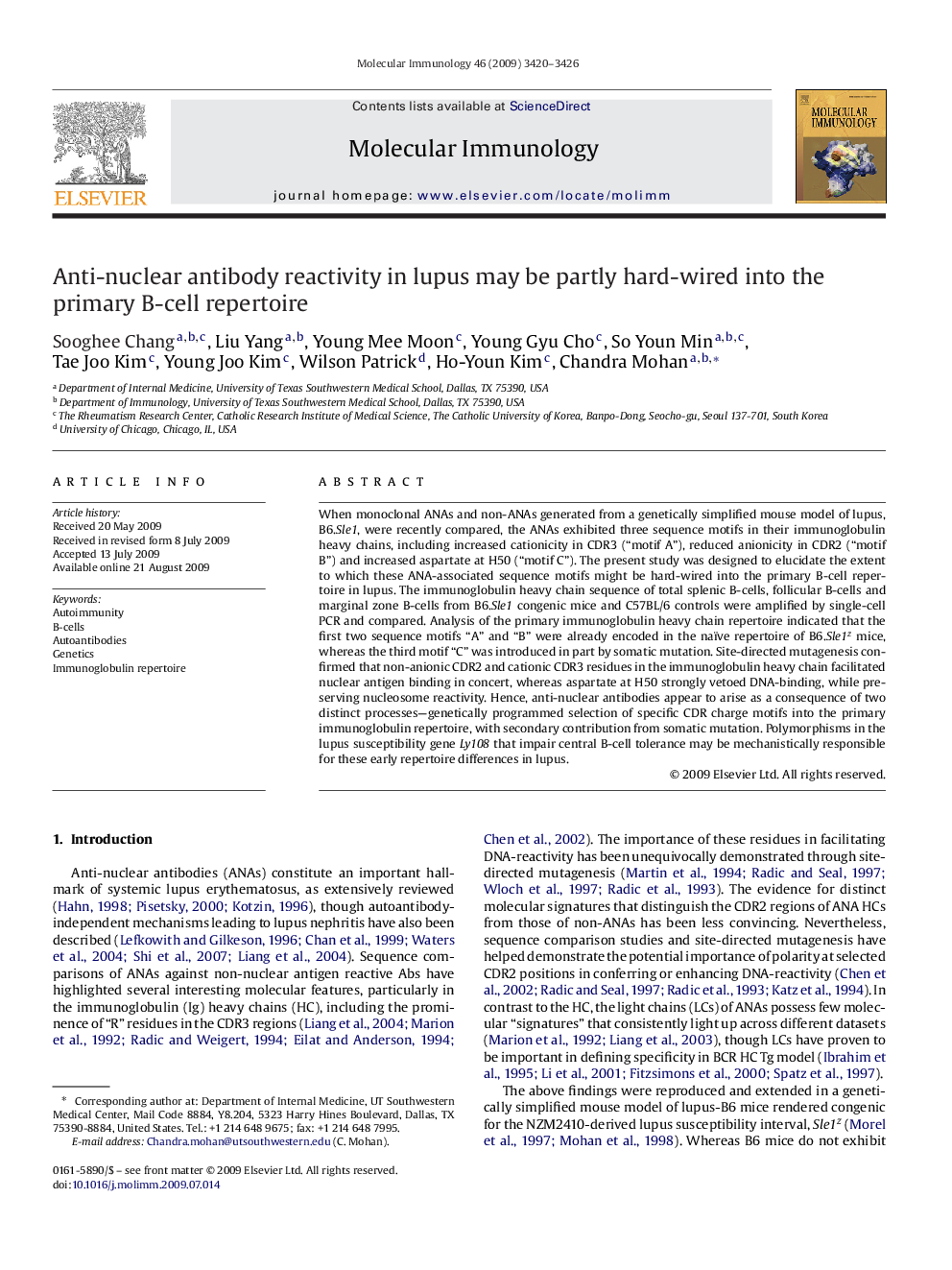| Article ID | Journal | Published Year | Pages | File Type |
|---|---|---|---|---|
| 2831348 | Molecular Immunology | 2009 | 7 Pages |
When monoclonal ANAs and non-ANAs generated from a genetically simplified mouse model of lupus, B6.Sle1, were recently compared, the ANAs exhibited three sequence motifs in their immunoglobulin heavy chains, including increased cationicity in CDR3 (“motif A”), reduced anionicity in CDR2 (“motif B”) and increased aspartate at H50 (“motif C”). The present study was designed to elucidate the extent to which these ANA-associated sequence motifs might be hard-wired into the primary B-cell repertoire in lupus. The immunoglobulin heavy chain sequence of total splenic B-cells, follicular B-cells and marginal zone B-cells from B6.Sle1 congenic mice and C57BL/6 controls were amplified by single-cell PCR and compared. Analysis of the primary immunoglobulin heavy chain repertoire indicated that the first two sequence motifs “A” and “B” were already encoded in the naïve repertoire of B6.Sle1z mice, whereas the third motif “C” was introduced in part by somatic mutation. Site-directed mutagenesis confirmed that non-anionic CDR2 and cationic CDR3 residues in the immunoglobulin heavy chain facilitated nuclear antigen binding in concert, whereas aspartate at H50 strongly vetoed DNA-binding, while preserving nucleosome reactivity. Hence, anti-nuclear antibodies appear to arise as a consequence of two distinct processes—genetically programmed selection of specific CDR charge motifs into the primary immunoglobulin repertoire, with secondary contribution from somatic mutation. Polymorphisms in the lupus susceptibility gene Ly108 that impair central B-cell tolerance may be mechanistically responsible for these early repertoire differences in lupus.
